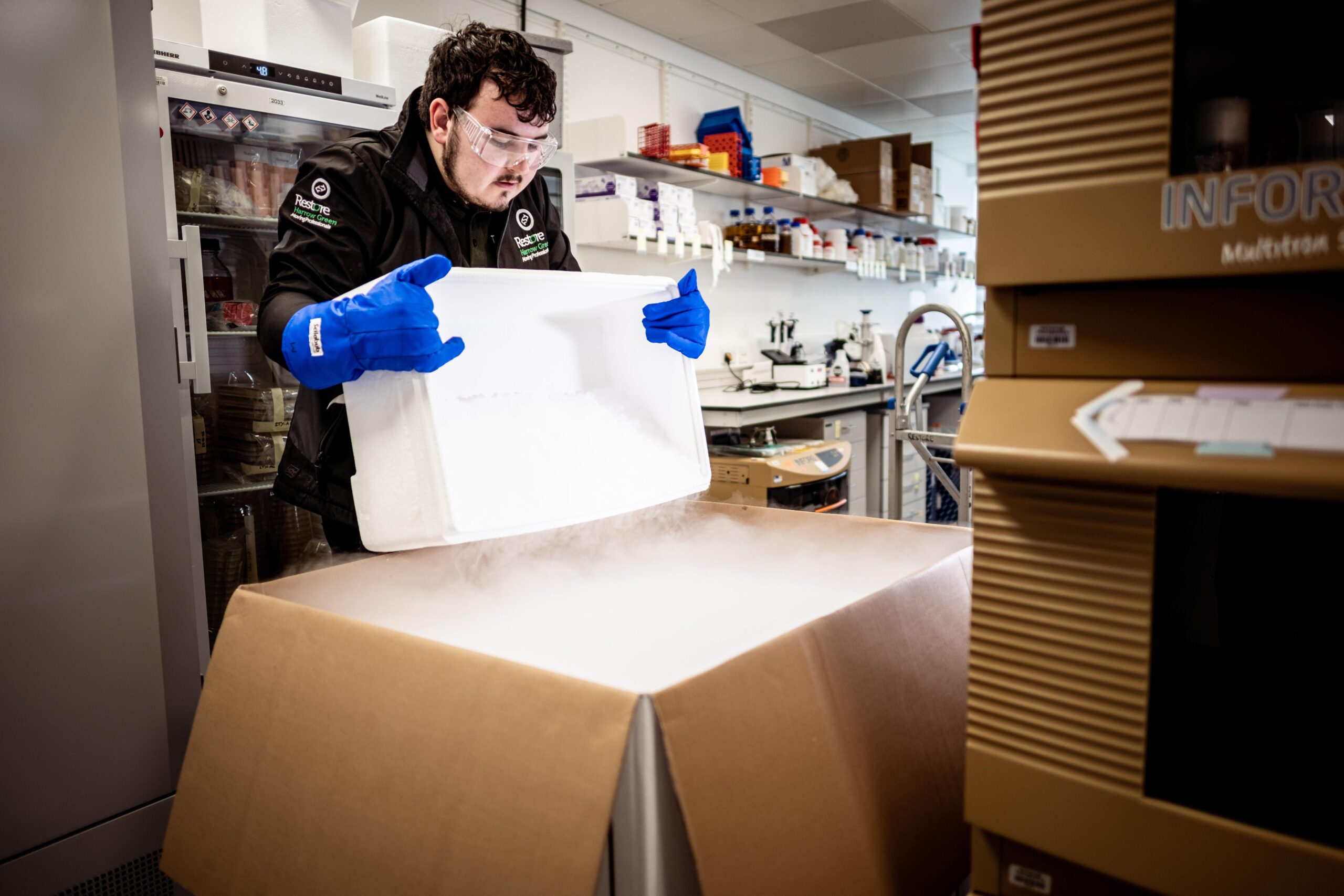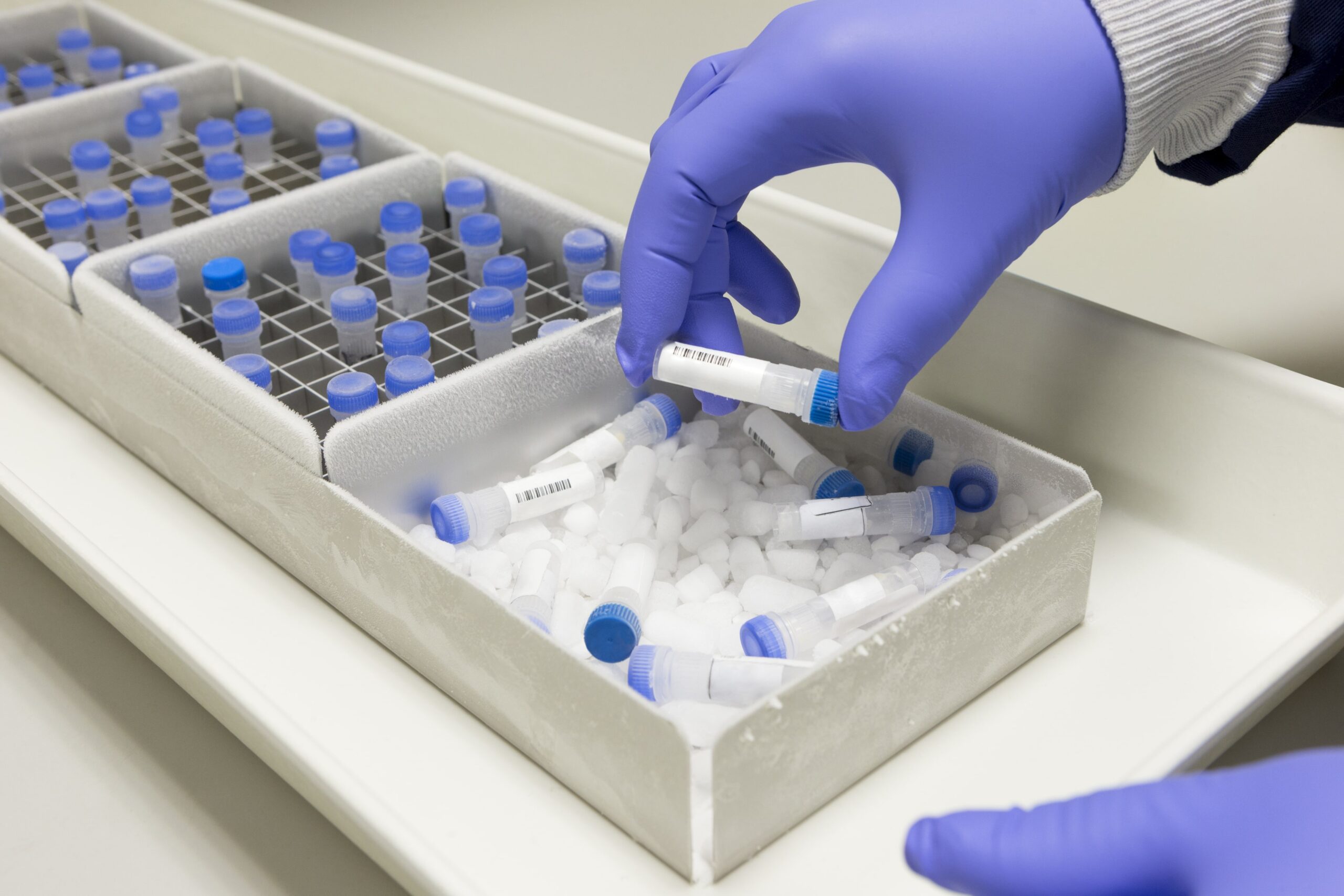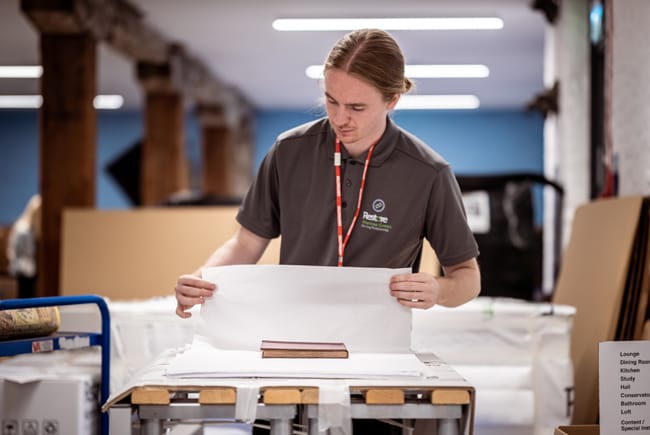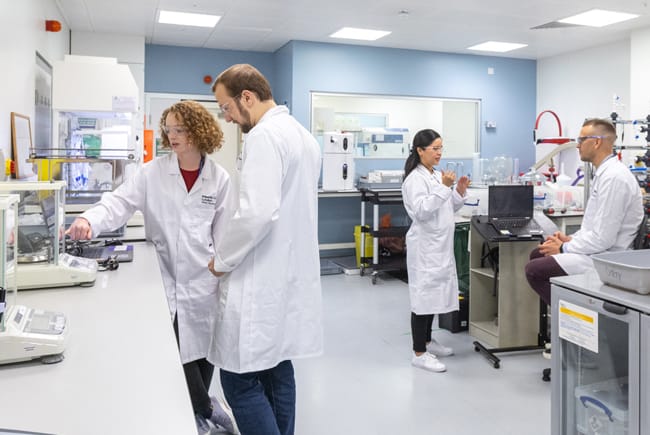
What is cold storage?
If you’ve ever wondered what a cold storage room is or why it’s so crucial for industries like science, healthcare, and biotechnology, the answer comes down to one word: preservation. Cold storage is all about keeping delicate, valuable, or perishable materials in a carefully controlled environment where temperature stability ensures they remain safe and effective.

As opposed to your household fridge, which is for day-to-day food storage, a cold room or lab freezer is specifically designed to handle much more stringent requirements. From cell cultures and clinical samples to vaccines and medicines, what is kept in cold storage may be worth millions in cost as well as scientific value. That’s why taking chances with run-of-the-mill residential fridges is a recipe for disaster.
In the real world, a cold room is a dedicated, temperature-controlled space intended to supply conditions that extend the shelf life of sensitive products. It is the backbone of modern-day labs, hospitals, and research institutes. Life sciences and health care samples simply cannot survive without it.
What is stored in cold storage?

These are tissue samples, DNA, RNA, proteins, and cell lines. To store them at controlled temperatures is critical to secure their integrity so that scientists are able to rely on them to run experiments and studies months or even years later.

Clinical specimens such as urine, plasma, blood, and other fluids are typically stored in cold rooms by hospitals and diagnostic labs. These samples are necessary for patient testing, disease monitoring, and continued research.

Vaccines, biologics, investigational drugs, and controlled substances all need precise storage conditions. As an example, the Pfizer COVID-19 vaccine was famously in need of ultra-low temperature freezers. Without cold storage, these life-saving drugs would quickly become useless.

Research labs rely on an uninterrupted supply of enzymes, antibodies, nucleotides, and buffers. Stored correctly, they are stable and effective. Without cold storage, experiments may provide unreliable or invalid results.

This could be anything from forensic evidence and cryopreserved reproductive tissue (sperm, eggs, embryos) to aberrant fieldwork samples preserved for research on a long-term basis. They all require strict control to ensure that once the door is open, nothing has been tampered with.
Cold storage for laboratories: Why it’s a game-changer
It is frustrating for a scientist to lose samples due to ineffective storage conditions, but it may hold up months or years of work. Well-designed cold storage preserves research integrity, regulatory compliance, and long-term sample viability.
The difference between a home freezer and a lab cold room is like night and day. Home appliances are marred with inconsistent cooling, malfunctioning thermostats, and weak seals. Equipment built in labs, however, is designed to minimise temperature fluctuations, resist repeated door openings, and provide alarm systems to warn of any issues in real-time.
Reliable cold storage is not just about convenience; it’s about trust. Whether you’re dealing with life-saving vaccines or rare tissue samples, a dependable cold storage setup ensures your work remains accurate and your investment is protected.
How cold rooms work
In theory, it’s not very different from the one in your kitchen at home, but the specifics are much more sophisticated. Laboratory cold storage systems employ industrial-grade compressors, quality insulation, and microprocessor-based temperature controllers to produce unshaken stability.
Sensors are placed in multiple locations around the chamber to track more than one point, rather than solely one. This prevents “hot spots” and maintains all items in identical, exact conditions. Built-in alarms notify staff immediately if temperatures deviate beyond safe parameters, with backup systems such as CO₂ or liquid nitrogen injections taking over to avert catastrophes when power is lost.
Some facilities, such as those provided by Restore Harrow Green’s biobanking services, offer 24/7 live temperature monitoring, infrared thermal scanning, and dual power backup systems. It is not high tech for the sake of it; it’s what ensures critical samples are not compromised by any eventuality.
Types of laboratory cold rooms

Used for reagents, media, and general lab consumables. Comes in undercounter, countertop, and upright configurations.

Ideal for short- to medium-term storage of biological and clinical specimens.

The workhorses of long-term sample storage. Perfect for DNA, RNA, tissue, vaccines, and biospecimens.

Premium equipment that gradually controls freezing, avoiding the formation of ice and maintaining cell viability. Often used in stem cell studies and reproductive medicine.

For long-term storage, usually with liquid nitrogen or mechanical systems. Most suitable for irreplaceable or unique biological samples.
How to store items safely in cold rooms
A cold laboratory is less about having the right equipment; it’s also about how to use it. Poor handling or disorganisation of whatever equipment you may have will defeat even the best technology. Instead, safe storage can be achieved in the following ways:
- Mark everything: The samples must be traceable and coded for easy access.
- Use inventory systems: Modern laboratories have a tendency to utilise computerised sample management systems that enable you to track and recall samples instantly. Restore Harrow Green, for instance, uses a scientific-grade sample management system designed specifically by scientists, for scientists.
- Minimise door openings: Each door opening causes temperature changes. Look forward and try to avoid unnecessary access.
- Segregated storage areas: High-risk or high-value samples should be stored in different compartments or specific freezers to reduce exposure.
- Regular audits: Periodic checks on storage procedures ensure compliance and reduce the likelihood of accidental loss.
Maintaining these practices guarantees your cold storage lab works as intended and reduces lost time and money.
How to choose the right cold room configuration for your application
Choosing a cold room is more than driving out to buy the biggest freezer you can find. It requires careful consideration and reflection on your operation, facility, and regulatory needs. Ask yourself the following:
- What will you be storing? The sensitivity and type of your samples determine refrigeration, ultra-low, or cryogenic.
- How much space do you have? Capacity is usually expressed in litres, but a more convenient measure is how many freezer boxes or racks the machine will accommodate.
- What’s your process? If your personnel need frequent access, utilise equipment with high-powered compressors and multiple inner doors to reduce thermal disruption.
- What’s your fallback? Consider equipment with two power sources, back-up generators, or LN₂ support if you are in a pinch.
- Do you need flexibility? Modular cold rooms allow you to increase capacity when research demands grow.
Having experienced professionals, such as a laboratory relocation partner on board, can mean the difference between a successful installation and a costly error. With specialist vehicles, trained staff, and compliance expertise, they help laboratories relocate without sacrificing sample integrity.
Compliance and regulations you can’t afford to ignore
Cold storage isn’t a standalone process; it’s subject to strict compliance rules. Depending on what you’re storing, you may need to include:
- Human Tissue Authority (HTA) licensing: If you’re a laboratory storing human tissue in the UK, this is indelible. Restore Harrow Green, for instance, is fully HTA-approved.
- Good Manufacturing Practice (GMP): Clinical trials and pharma storage require this.
- Dangerous goods regulations: For the storage and transport of hazardous materials, requiring qualified Dangerous Goods Safety Advisors (DGSA).
- Audit-ready monitoring: Increasingly mandated by insurers and regulators, continuous logging ensures compliance and protects your institution against liability.
Ignoring these requirements isn’t just a technicality; it can result in failed audits, loss of funding, or even legal action.

Don’t let temperature kill your quality
From vaccine and DNA samples to clinical samples and investigational medicines, cold storage is the behind-the-scenes guardian of scientific discovery. Without it, all those years of effort and billions of pounds expended on research could vanish overnight.
If you’re asking yourself, what cold storage is in the context of your lab, the answer is simple: it’s the foundation of safe, reliable, and compliant science. But it’s also an area where trying to cut costs by relying on residential equipment can be a false economy.
Don’t let temperature swings undo all your hard work. Spend smart, and have your cold storage unit work as diligently as you do.

Let us keep your samples safe
Cold storage is not necessarily the most thrilling aspect of scientific research, but it is certainly one of the most critical. Good equipment protects your samples, protects your wallet, and protects your lab from all the regulatory requirements. Whether you’re considering the humble fridge for enzymes or a cryogenic freezer for stem cells, understanding how cold storage works is your first step towards making an intelligent investment.
By seeking advice from veteran providers like Restore Harrow Green, you can be assured that your cold room not only complies with technical requirements but also fulfils your final research and operational goals. Let’s face it, when it involves protecting your most valuable assets, precision and reliability are not items of luxury; they’re essentials. Reach out and get a quote to discover how we can support you with reliable sample storage.
 Customer Login
Customer Login